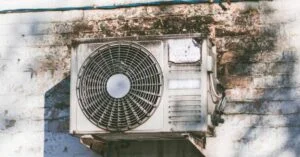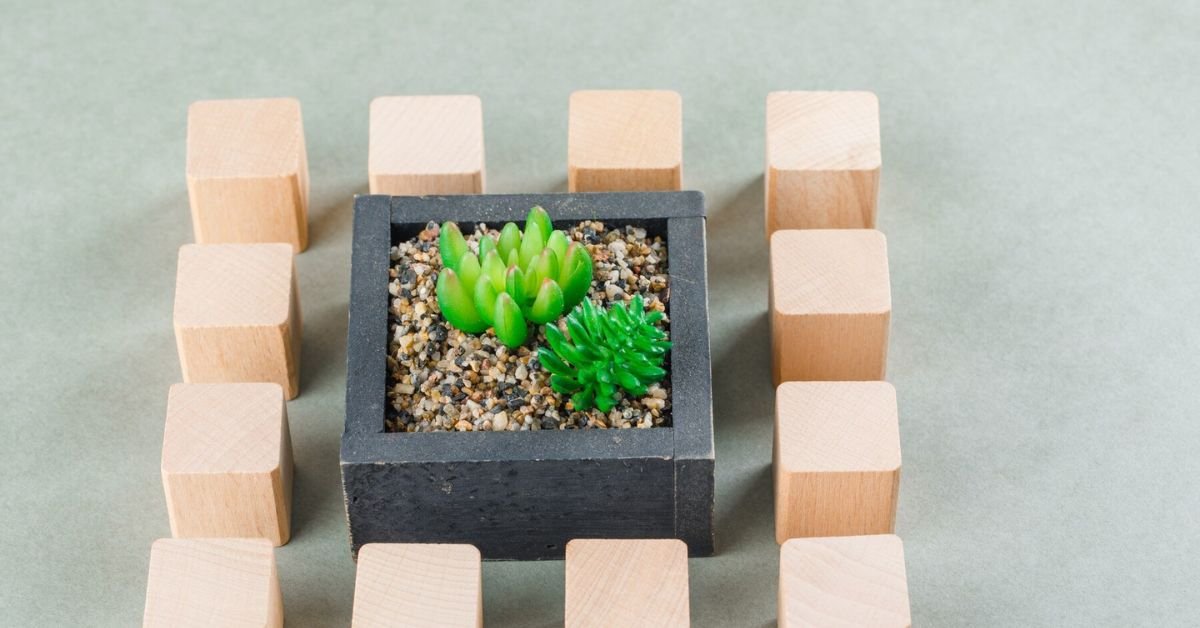Home Decor
6 Most Common Issues Found in Certified Home Inspections

When it comes to purchasing a new home, obtaining a certified home inspection is one of the most crucial steps you can take. Not only does it provide peace of mind. It also ensures that you’re making a wise investment.
Certified home inspections help identify hidden issues that might not be visible during a typical walkthrough. In this blog post, we’ll uncover the six most common issues found in certified home inspections and explain why they matter.
So, read on!
1. Roof Problems
The roof is one of the most important components of a home as it protects you and your belongings from the elements. During a certified home inspection, home or apartment inspectors like GuardianPro will thoroughly examine the roof for any signs of damage or potential issues.
Some common roof problems found during inspections include missing or damaged shingles, leaks, and improper installation. These issues can lead to water damage, mold growth, and other costly repairs if left unaddressed.
2. Plumbing Issues
Plumbing problems can be a major headache for homeowners. During a certified home inspection, the inspector will check all visible pipes, fixtures, and drains to ensure they are in good working order.
Some common plumbing issues found during inspections include leaky faucets, clogged drains, and faulty water heaters. These issues can lead to water damage, high utility bills, and potential health hazards.
3. Electrical System Deficiencies
An electrical system that is not up to code or functioning properly can be a significant safety hazard. During a certified home inspection, the inspector will check for any outdated wiring, faulty outlets, and other potential hazards.
Electrical issues found during inspections can range from minor inconveniences like flickering lights to more serious problems like overloaded circuits and fire hazards.
4. HVAC System Concerns
The heating, ventilation, and air conditioning (HVAC) system is responsible for keeping your home comfortable year-round. During a certified home inspection, the inspector will assess the condition and functionality of the HVAC system.
Common issues found during professional home inspections include dirty air filters, malfunctioning thermostats, and inadequate insulation. These problems can lead to poor indoor air quality, high energy bills, and expensive repairs or replacements.
5. Foundation and Structural Issues
The foundation and structure of a home are crucial to its overall stability. During a certified home inspection, the inspector will check for any signs of foundation settling, cracks in walls or floors, and other structural issues.
These issues can be costly to fix and may indicate bigger problems with the home’s construction. It’s essential to address these concerns before purchasing a new home to avoid potential safety hazards and expensive repairs down the line.
6. Moisture and Mold Problems
Excess moisture and mold growth can be a sign of larger issues with a home’s structure or plumbing. During a certified home inspection, the inspector will check for any signs of water damage, leaks, and mold.
Mold can pose serious health risks and can be expensive to remediate. If left unaddressed, it can also lead to structural damage and reduced air quality in the home.
Understand the Most Common Issues Found in Certified Home Inspections
Certified home inspections are an essential step in the home-buying process. They help identify potential issues that could lead to costly repairs or safety hazards.
By understanding the most common problems found during inspections, you can make a more informed decision when purchasing a new home. You can ensure that your investment is a wise one.
If you want to read more, visit our blog page. We do have more topics!
Did this article help you? If so, take a look at some of our other blog posts for more informative reads.
Home Decor
A.C. Replacement Services in Columbus: What You Need to Know

When summer heat comes around, a broken air conditioning system can turn your house into a sauna. If your existing system is not working the way it should, replacing it may be the way to go.
Although replacing your A.C. may seem intimidating, knowing when you need to do it and how to go about it can make it less of a hassle. Whether you’re dealing with frequent breakdowns, inefficiency, or just an old system, a replacement can bring better comfort and energy savings to your home.
Signs It’s Time for A.C. Replacement
Knowing when to replace your A.C. is crucial for both comfort and efficiency, and several signs can indicate that it’s time for a new unit. One of the most self-evident is age, if your air conditioner is more than 10-15 years old, it probably is not as efficient as it used to be, so it is a top choice for getting A.C. Replacement Columbus, OH as soon as possible. Even if the unit appears to be functioning, older models tend to utilize outdated technology that can cost you more on your energy bill.
If you find that your home isn’t cooling properly or irregularly, your A.C. could be struggling to keep up. This can become noticeable on exceptionally hot days. In addition, constant repairs in the form of requiring replacement elements such as motors or compressors means that your system is in decline.
Chronic breakdowns don’t just waste dollars but signal the system to have reached its service life end. Finally, if your utility bills have been rising even if your cooling measures have not undergone any change, it is a sign that the system is producing more work than it should do, which most often is indicative of inefficiency.
Choosing the Right Replacement System
The choice of the correct air conditioner is a critical phase of the process of replacement. Your new air conditioner should have the ability to effectively cool your house while utilizing energy efficiently. Start by determining the right size for your home.
A unit that is too small won’t cool your home well, and one that is too large will cycle on and off excessively, wasting energy and money. An HVAC professional can perform a load calculation to determine the right size for your home in terms of square footage, insulation, and more.
Energy efficiency is also a major consideration when choosing a new air conditioner. Choose models with a high Seasonal Energy Efficiency Ratio (read more here) rating, which is the rate of the cooling capacity for a season. The higher the SEER rating, the more energy-efficient the system will be, and your electricity bills will be reduced.
New systems are designed to use less energy and reduce your carbon footprint. Buying a unit with a higher SEER rating may cost more upfront, but the long-term energy savings can be well worth it.
Also consider any additional features or technologies that will enhance comfort and efficiency. Some newer systems come equipped with advanced filtration systems, which can enhance indoor air quality by removing dust, allergens, and pollutants.
If you live in a particularly humid environment, you may consider purchasing a unit that has dehumidification technology, as this will cool and make your house more comfortable. Having a system with smart thermostats or zoning capabilities will also enable you to control the temperature in your house more effectively, so your energy consumption is even more efficient.

Professional Installation is Important
After selecting the proper air conditioning system for your house, proper installation is the key to making the most out of its performance. Although it may be cost-effective to install the unit yourself to avoid spending money, professional installation is crucial to long-term dependability and efficiency.
A licensed HVAC technician will have the training to install correctly, having the unit installed in the right place, correctly connected to the appropriate power source, and set up according to any needed permits. Incorrect installation can lead to a variety of issues.
For example, damaged ductwork, insufficient refrigerant, or incorrect wiring can all cause your system to run inefficiently or even fail early (source: https://www.bogleheads.org/forum/viewtopic.php?t=383942). A professional installer will ensure that your unit is installed to manufacturer specifications and meets all local building codes.
A licensed technician can also resolve any unexpected problems that may arise during installation, such as problems with your home’s electrical or plumbing systems. The cost of replacing your air conditioning system can be fairly varied depending on several factors, including the size of your home, the brand of the system, and how complex the installation is.
Columbus A.C. replacements average $3,000 to $7,000. However, the ultimate cost may be more or less depending on your needs. For instance, larger houses that are multistoried would need a greater unit, leading to a rise in the final price.
Home Decor
A Guide on How to Choose and Maintain a High-Efficiency Furnace

Most people are doing everything they can to reduce their electricity bills. When heating your home, a high-efficiency furnace is a sound choice that can save you money. These systems reduce electricity costs, lower energy consumption, and are better for the environment. Selecting the right high-efficiency furnace and maintaining it properly will help ensure efficient heating for many years.
What Is a High-Efficiency Furnace?
High-efficiency furnaces are designed to convert more fuel into heat for less waste. You can measure their efficiency through the Annual Fuel Utilization Efficiency (AFUE) rating. High-efficiency furnaces typically have AFUE ratings of 90% or higher. A rating this high means the furnace only loses about 10% of energy through exhaust. Learning about high efficiency furnaces helps you understand the advanced features you may find on some systems.
- Sealed combustion helps reduce heat loss by drawing air from the outside rather than inside your home.
- Variable-speed blowers adjust the airflow to help maintain consistent temperatures while using much less energy.
- Two-stage heating systems operate at a lower heat output for mild weather and increase the heat during colder conditions, helping improve efficiency.
Tips for Choosing a High-Efficiency Furnace
Now that you know more about high-efficiency furnaces, you must know what to look for when choosing one. Selecting the best furnace involves several key factors:
AFUE Rating
High-efficiency furnaces must have an AFUE rating of at least 90%. Some newer models may even exceed 98%. Choose a high-efficiency furnace with a high AFUE rating for greater efficiency.
Proper Size
You must consider your home size to determine what furnace size you need. Systems that are too small will struggle to keep your home warm, causing increasing electricity costs. Systems that are too large will waste energy. Ideally, you should hire a professional HVAC contractor to help determine the best home furnace size. They will perform a load calculation to help you make the correct decision.
Fuel Type
You also need to think about the fuel type based on what you have available in your area. You can choose gas, oil, or electric models. Gas is the most efficient, but rural areas may not have access to natural gas lines.
Cost Vs. Savings
Although cost should not be your complete deciding factor, it is certainly important to consider. Although high-efficiency furnaces typically cost more than other models, the savings they offer more than pay for the added expense over the system’s life. High-efficiency furnaces can help you save on your electricity bills.
High-Efficiency Furnace Maintenance Tips
Maintaining your high-efficiency furnace is critical for keeping it working safely and effectively. You should schedule annual professional maintenance, usually in late summer or early fall, to ensure your furnace is ready for winter. In addition to professional maintenance, make sure you do the following:
- Change or clean your filters regularly.
- Keep your ducts and vents clean.
- Check the drainage system for blockages.
A high-efficiency furnace can significantly affect the cost of heating your home during the winter. A professional HVAC contractor can help you choose the right high-efficiency system based on your home size, budget, and fuel source. The right system can effectively heat your home with much less energy loss, better for your wallet and the environment. Now is the perfect time to explore the options that will work for your home.
Home Decor
The Benefits of Hardscaping for Your Home’s Value

An Introduction to Hardscaping
Integrating hardscaping into your home’s landscape is more than just a trend; it’s a smart investment that adds beauty and value. Whether it’s stunning stone pathways, elegant patios, or sophisticated water features, hardscaping offers both durability and visual allure that can dramatically enhance any outdoor area. As the foundation of your landscape design, these elements intersect with functionality and aesthetic appeal.
Unlike landscaping, which is primarily focused on greenery, hardscaping uses materials such as stone, wood, and concrete to create the architectural framework of your garden. By designing with hard elements, you create outdoor spaces that complement your home’s façade and withstand the test of time. The result is an environment that invites enjoyment and reflection throughout the seasons.
The Value Added by Hardscaping
Investing in hardscaping is known to enhance property value substantially. Real estate experts often emphasize the importance of curb appeal, and a sophisticated hardscape can be a pivotal factor in a home’s first impression. A meticulously executed layout creates a cohesive and inviting look that attracts potential buyers while setting your property apart from others on the market.
Buyers do not just see a home; they envision a lifestyle enriched by the seamless integration of indoor and outdoor spaces. This connection is fostered by thoughtful hardscaping that improves aesthetic charm and functional use, addressing modern desires for open living areas beyond traditional home boundaries.
Essential Hardscape Elements
Key components of effective hardscaping include patios, pathways, driveways, and retaining walls, each contributing uniquely to a home’s landscape. The elegance of these structures lies in their ability to shape both useable and beautiful spaces. Patios offer areas for relaxation and entertainment, pathways lead guests with a guiding aesthetic, and retaining walls introduce texture and practical hillside management.
The choice of materials for these elements can significantly influence the overall look. From the warm hues of natural stone to the sleek lines of modern concrete, material selection serves dual purposes: achieving design cohesion and supporting environmental resilience.
Driveways as a Key Feature
More than just functional components of a property, driveways can be intriguing features that improve curb appeal. A well-designed driveway provides crucial access and enhances the visual continuity of your home’s exterior aesthetic. By using high-quality materials and incorporating attractive designs, homeowners can create driveways that contribute significantly to the overall elegance of the property.
Elegance in design should be paired with functionality, such as ensuring an apt fit for various weather conditions and vehicle types. This balance ensures durability and ease of maintenance while making a lasting visual impact.
Lifestyle Enhancement Through Hardscaping
Beyond financial gains, quality hardscaping offers immediate lifestyle benefits. Outdoor living spaces designed with thought and care can become focal points for family gatherings, relaxation, and celebration. These elements transform underutilized areas into vibrant extensions of the home, encouraging outdoor activities and leisure.
Elements like alfresco dining areas, fire pits, and seating walls expand indoor comfort to the outdoors, making the space livable year-round. They also emphasize the importance of personalizing a landscape to meet individual lifestyle needs.
Sustainable and Eco-friendly Hardscaping
As environmental stewardship becomes more pressing, sustainable landscaping solutions are integral to modern remodeling strategies. Opting for environmentally conscious materials and practices in hardscaping helps conserve resources while reducing ecological impact. For instance, using permeable pavers aids in water management by allowing rainwater to seep through rather than run off, minimizing erosion and supporting local ecosystems.
Strategic placement of native plants within hardscape designs can further enhance the environment while providing beautiful and robust natural enhancements. These measures contribute to sustainability and create a balanced and naturally integrated outdoor landscape.
Maximizing Resale Potential
By focusing on quality execution and timeless design in your hardscaping, you can bridge the gap between current needs and future resale potential. Expertly curated landscapes have a quantifiable impact on property value, making hardscaping a significant component of home improvement strategies. According to real estate experts, outdoor spaces with cohesive design and high functionality attract more interest and maintain their value over time.
For a successful approach, it’s recommended to involve professional landscapers and designers who can bring your vision to life while optimizing structural and design elements. Their expertise ensures that the investment enhances daily life and fortifies the financial potential of the property.
Implementing Your Hardscaping Vision
Bringing a hardscape vision to fruition involves planning and collaboration. Initial steps include developing a comprehensive design plan, selecting suitable materials, and setting a realistic budget. Building a strong team that understands the aesthetics and mechanics of outdoor design is crucial in executing a project that faithfully captures your vision.
According to the landscape design network, aligning with experienced professionals not only aids in realizing creative ideas but also ensures technical precision and functional success, making the outcome both enduring and breathtaking.
-

 Entertainment10 months ago
Entertainment10 months agoSandra Orlow: Exploring the Life and Legacy of a Cultural Icon
-

 General6 months ago
General6 months agoBaby Alien Fan Bus: Watch Parts 2 & 3 on Twitter, Reddit!
-

 General6 months ago
General6 months agoDiana Nyad & Bart Springtime: A Swim to Success
-

 Business11 months ago
Business11 months agoTex9.Net Crypto: Fast, Secure International Money Transfers with Competitive Rates
-

 Business10 months ago
Business10 months agoSnapchat Planets: Exploring Your Streak Universe
-

 Business11 months ago
Business11 months agoWhat is O Farming: How to Make Money Online and Its Start-Up Benefits
-

 General9 months ago
General9 months agoDeeper Dive into myfavouriteplaces. org:// blog
-

 Business11 months ago
Business11 months agoFintechZoom Apple Stock: Real-Time Insights and Expert Analysis
